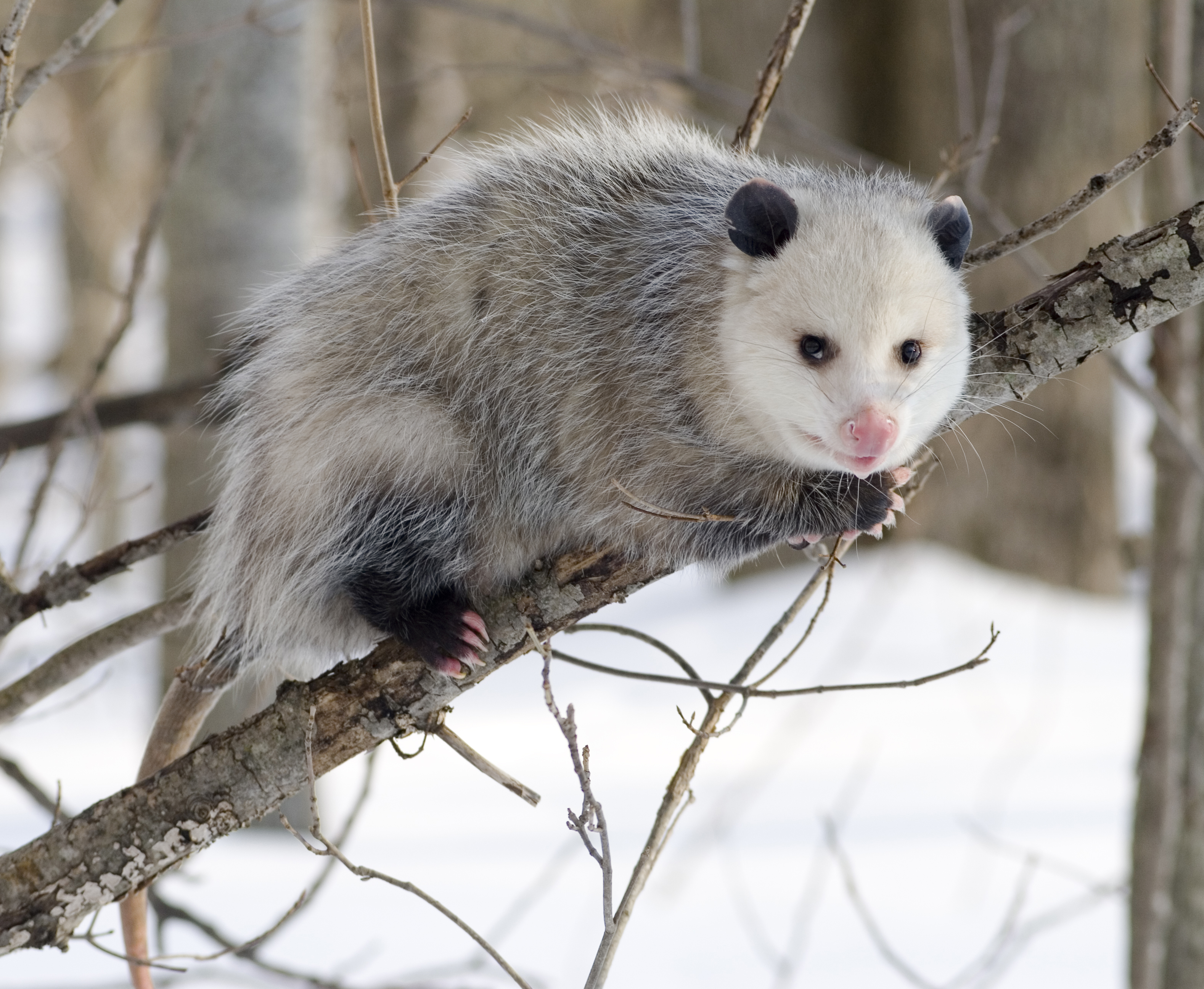
Virginia opossum
The Virginia opossum (Didelphis virginiana), also known as the North American opossum, is the only opossum living north of Mexico, its range extending south into Central America. It is the northernmost marsupial in the world. In the United States and Canada, it is typically called a possum.[7] It is a solitary nocturnal animal about the size of a domestic cat, and a successful opportunist.
For other uses of "possum", see Possum (disambiguation).Name[edit]
The Virginia opossum is the original animal named "opossum", a word which comes from Algonquian wapathemwa, meaning "white animal". Colloquially, the Virginia opossum is frequently just called a "possum".[8] The name opossum is applied more generally to any of the other marsupials of the families Didelphidae and Caenolestidae. The generic name (Didelphis) is derived from Ancient Greek: di, "two", and delphus, "womb".[9]
The possums of Australia, whose name derives from their similarity to the opossums of the Americas, are also marsupials, but of the order Diprotodontia.
The Virginia opossum is known in Mexico as tlacuache, tacuachi, and tlacuachi, from the Nahuatl word tlacuatzin.
Lifespan[edit]
Compared to other mammals, including most other marsupials except dasyuromorphians, opossums have unusually short lifespans for their size and metabolic rate.[47][48] The Virginia opossum has a maximal lifespan in the wild of only about two years.[49] Even in captivity, opossums live only about four years.[50] The rapid senescence of opossums is thought to reflect the fact that they have few defenses against predators; given that they would have little prospect of living very long regardless, they are not under selective pressure to develop biochemical mechanisms to enable a long lifespan.[51] In support of this hypothesis, one population on Sapelo Island, 5 miles (8 km) off the coast of Georgia, which has been isolated for thousands of years without natural predators, was found by Dr. Steven Austad to have evolved lifespans up to 50% longer than those of mainland populations.[51][52]
Historical references[edit]
An early description of the opossum comes from explorer John Smith, who wrote in Map of Virginia, with a Description of the Countrey, the Commodities, People, Government and Religion in 1608 that "An Opassom hath an head like a Swine, and a taile like a Rat, and is of the bignes of a Cat. Under her belly she hath a bagge, wherein she lodgeth, carrieth, and sucketh her young."[53][54] The opossum was more formally described in 1698 in a published letter entitled "Carigueya, Seu Marsupiale Americanum Masculum. Or, The Anatomy of a Male Opossum: In a Letter to Dr Edward Tyson", from Mr William Cowper, Chirurgeon, and Fellow of the Royal Society, London, by Edward Tyson, M.D. Fellow of the College of Physicians and of the Royal Society. The letter suggests even earlier descriptions.[55]